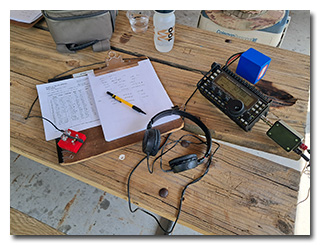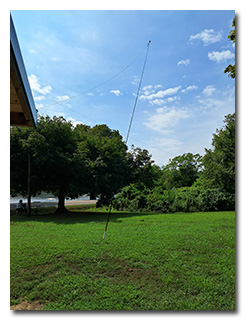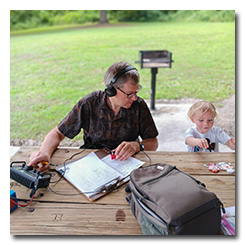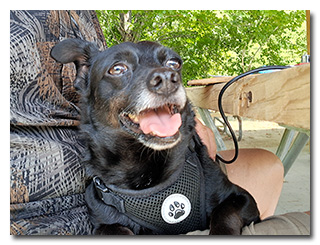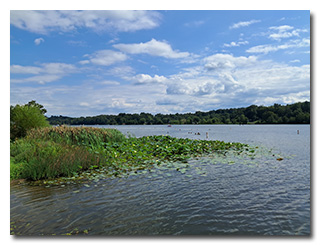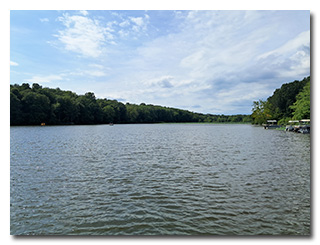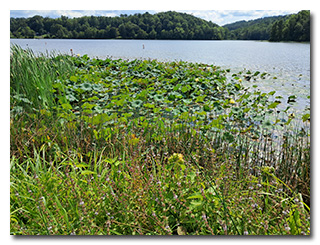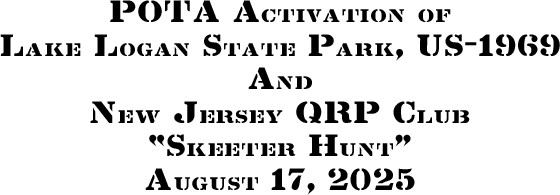
by William Eric McFadden
From the park's website:
-
Lake Logan is located in Hocking County in southeastern Ohio. This territory once belonged to the Wyandot Native Americans, who had a large village known as Oldtown on the Hocking River, located one mile north of Logan. Logan was established by Thomas Worthington in 1816 and named after the Mingo Chief, James John Logan.
The Hocking River provided sufficient water power for the operation of grist and sawmills, particularly at the falls above Logan. The town of Logan was slow to progress until the opening of the Hocking Canal, a branch of the Ohio-Erie Canal, in 1838. Several industries prospered due to the rich mineral resources of the Hocking Valley. The discovery of immense quantities of coal gave rise to a flourishing mining industry. Towns appeared and vanished as quickly as mines opened and closed.
It was soon found that iron ore could be extracted from the sandstone bedrock of the area. During the Civil War, Ohio’s iron industry reached its peak as the leading producer of iron for implements and weapons. No less than 46 furnaces were firing in Ohio’s six-county Hanging Rock Iron Region.
The clay soils of the Hocking Valley helped Ohio become a leader in clay products. The valley’s firebrick industry manufactured clay tile, building and paving bricks, and clay sewer pipe. Evidence of the industry can be seen in the many brick houses and abandoned kilns of the area. Clay is still an important commodity in the region.
Lake Logan was developed in 1955 for recreational purposes. The area was administered by the ODNR Division of Wildlife until 1964, when jurisdiction was transferred to the Division of Parks and Recreation. Originally known as Hocking Lake, the park was renamed Lake Logan to reflect the Native American heritage of the area and to avoid confusion with nearby Hocking Hills State Park and Forest.
Pictures
- Eric's KX3 station
- Eric's mast and antenna
- Theo-dog, selfie
- Lake Logan: 1 | 2 | 3
- Eric and Archer; photo by Vickie McFadden
Description
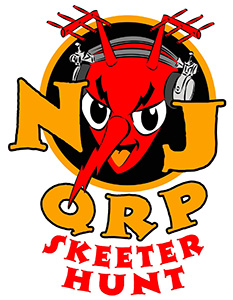 On Sunday, August 17, 2025, one member of the Southeast Ohio Radio Adventure Team
performed a successful activation of Lake Logan State Park in Ohio as part of the Parks on the
Air (POTA; link) program.
On Sunday, August 17, 2025, one member of the Southeast Ohio Radio Adventure Team
performed a successful activation of Lake Logan State Park in Ohio as part of the Parks on the
Air (POTA; link) program.
Eric McFadden, WD8RIF, performed a valid activation of Lake Logan State Park while participating in the New Jersey QRP Club's Skeeter Hunt (link) field operating event as Skeeter #43. Eric was accompanied by his dog Theo, his wife Vickie, and his grandson Archer.
Arriving at Lake Logan State Park, Eric went directly to the park's only picnic shelter, with the hope that it would be available for shelter from the intense sunshine and high temperatures. Surprisingly, the picnic shelter was unoccupied, and Eric chose a picnic table at one end of the shelter for his base-of-operations. In order to qualify for the Skeeter Hunt x4 multiplier (portable, homebrew or kit-built radio), Eric had brought his Enhanced KX3 Travel Kit because it includes his Elecraft KX3, a transceiver that Eric had built from a kit. Eric deployed the Enhanced KX3 Travel Kit's 28½' EFRW speaker-wire antenna as a sloper to the top of his Goture Red Fox Super Hard 720 carbon-fiber mast held upright on a spike, placing three 17' counterpoise wires directly on the ground, arranged to avoid being trip- or tangle-hazards for Archer and Theo-dog. Placing his KX3 on the picnic table, connecting the 4Ah LiFePO4 external battery, connecting the Whiterook MK33 paddle, and connecting the Sony headphones, Eric was on the air at 1834 UTC, ninety-three minutes into the Skeeter Hunt's four-hour period.
As at Eric's previous activations of this park, he had good cell-signal and would be able to spot himself on POTA Spots (link), if necessary, and to use POTA Spots to identify possible park-to-park (P2P) QSO opportunities.
Eric wanted to operate as a straight-up Skeeter Hunt participant for as long as he could, spotting himself on POTA Spots only if (or when) he found himself having trouble making the ten QSOs necessary to validate his POTA activation.
Starting on 20m, Eric dialed his KX3 to the 20m QRP calling frequency of 14.060 MHz and began hunting for Skeeter Hunt stations, successfully working six Skeeters in twenty-two minutes. When he could no longer find new Skeeters to call, he found himself a clear frequency to run, began calling "CQ BZZ", and worked two more Skeeters in about four minutes.
With eight QSOs in the log, all of which were Skeeters, Eric decided to do a bit of hunting for POTA P2P QSOs, and at 1911 UTC, he worked W8WZ at Two Ponds National Wildlife Refuge (US-0227) in Colorado.
At 1922 UTC, with nine QSOs logged, Eric found himself a clear 20m frequency to run, spotted himself on POTA Spots, and continued calling "CQ BZZ" to indicate his participation in Skeeter Hunt. Over the next fourteen minutes, Eric completed six QSOs on 20m, four of which were Skeeters.
Switching to 40m, Eric tuned to the 40m QRP calling frequency of 7.030 MHz and tuned for Skeeters, managing to work three Skeeters in just about eight minutes.
WD8RIF Skeeter Hunt Log: Band Mode Date Time Call RST (s) RST (r) SPC Exchange 20m CW 2025-08-17 1836 NN5DE 579 559 TX NR 105 20m CW 2025-08-17 1837 KE5CW 579 559 TX NR 123 POTA US-3051 20m CW 2025-08-17 1841 W4MPS 579 559 NC NR 004 POTA US-11375 20m CW 2025-08-17 1845 AD0YM 559 599 MO NR 090 POTA US-10310 20m CW 2025-08-17 1854 K4BAI 599 569 GA NR 083 20m CW 2025-08-17 1856 K3UT 539 559 GA NR 097 20m CW 2025-08-17 1902 K1SWL 579 559 NH NR 151 20m CW 2025-08-17 1906 W0ITT 559 559 MO NR 073 20m CW 2025-08-17 1911 W8WZ 559 559 CO POTA US-0227 20m CW 2025-08-17 1923 N4KGL 559 559 AL NR 056 POTA US-1034 (callsign initially logged wrong) 20m CW 2025-08-17 1931 K5PE 599 579 TX 20m CW 2025-08-17 1932 WB5RYB 579 559 GA 20m CW 2025-08-17 1934 K4PQC 599 579 GA NR 008 20m CW 2025-08-17 1935 N5GW 599 599 MS NR 029 20m CW 2025-08-17 1936 ND4K 579 599 GA NR 210 40m CW 2025-08-17 1941 NK8Q 579 559 OH NR 078 40m CW 2025-08-17 1945 KO4BHX 579 549 NC NR 077 40m CW 2025-08-17 1949 N2DGQ 559 559 NJ NR 031
In all, Eric made eighteen QSOs, with at least four of these being P2P QSOs, over a period of just about seventy-six minutes. All of Eric's QSOs were CW and were made with five watts output.
For Eric's Skeeter Hunt submission, his calculate score was 2,800 points:
14 Skeeters at 3 points each + 3 non-Skeeter QRO at 1 point each; x10 multiplier for 10 SPC; x4 multiplier for home-brew or kit-built field operation; 1000 bonus points for "Skeeter Hunt Blackjack" (working callsigns so numbers equal 21) NN5DE / KE5CW / K5PE / N5GW / K1SWL
Eric also submitted his log to the World Wide Flora and Fauna in Amateur Radio (WWFF; link) program.
(return)
